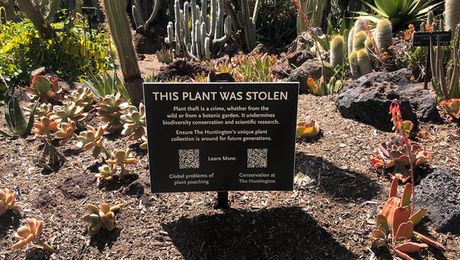
Change happens, especially in nature. The predictable type of change, like the rhythmic cascades of the seasons or caterpillars reinventing themselves as butterflies, are reassuring, even inspiring. But catastrophic changes, like trees felled in violent storms, are just the opposite.
A big change is coming to the Southeast, and for some of us, it’s already well underway. I’m talking about the arrival of the emerald ash borer (EAB) (Agrilus planipennis) and the death of ash trees (Fraxinus spp. and cvs., Zones 3–9) that follows close behind. As of June 2019, the presence of this pest has been reported in all southern states except Mississippi and Florida. If you are a forest-lover, this is hard change to bear, knowing there is no stopping it, especially as the hemlocks (Tsuga spp. and cvs., Zones 4–8) of our southern Appalachians continue to die. But as a home gardener, I am not resigned; instead, I have questions. So I reached out to Meg McConnell, Bartlett Tree Experts’ diagnostics services manager, in Bartlett’s research laboratory in Charlotte, North Carolina, for some answers from an expert.

EAB has been on Meg’s radar for quite some time, with the first reports of the beetle showing up in Charlotte in 2017. She confirmed the basic facts and provided clear advice. This invasive insect from Asia first showed up in Michigan in 2002 and has continued its spread both north and south with nothing to restrict it—except a lack of its food source, which is any species of ash tree. It can spread by flying short distances or traveling longer distances via human movement of infested firewood or timber. The small bright green beetles are seen only occasionally, but it’s the larvae that bore within the tree, damaging tissue and disrupting water and nutrient movement, that lead to the death of the tree within three to five years. First signs of damage are a yellowing of foliage in sections of the canopy, then dieback of major branches. Later signs are D-shape holes in the trunk, increased woodpecker activity (due to their desire to eat larvae for lunch), bark splitting, and trunk sprouts. If you’ve traveled in the Midwest or Mid-Atlantic, the areas where EAB has been the longest, you may have noticed the end results—skeletons of ash trees dotted throughout otherwise green roadsides and forests.

Meg says that if you have an ash tree on your property that you want to remain alive, treat it now. Don’t wait for symptoms to appear, and don’t wait for the first reports in your county if EAB has already been reported within twenty miles of you. Begin by visiting the Emerald Ash Borer Information Network home page, which includes a county-level map of first reports. Your state forest service website likely contains up-to-date county information as well.
Treatments that will save your uninfected or very recently infected tree utilize systemic insecticides applied either as a soil drench or tree injection. Depending on product and method, treatment is required every one to two years as long as the EAB is still active in your area. Educate yourself if you plan to tackle this yourself, or contact a local arborist for professional treatment.
Change is happening. Check to see if EAB has been reported in your county. If it has not but you find evidence of it, please report it to your local extension office or state department of agriculture. Homeowners and municipalities depend on up-to-date information to decide when to treat their trees, and scientists gain information that adds to understanding the pest. If you have ash trees, you can manage this change as long as you know it’s coming.
Paula Gross is the former Assistant Director of the University of North Carolina at Charlotte Botanical Gardens.
Fine Gardening Recommended Products

Pruning Simplified: A Step-by-Step Guide to 50 Popular Trees and Shrubs
Fine Gardening receives a commission for items purchased through links on this site, including Amazon Associates and other affiliate advertising programs.

Gardena 3103 Combisystem 12-Inch To 20-Inch Adjustable Metal Fan Rake Head
Fine Gardening receives a commission for items purchased through links on this site, including Amazon Associates and other affiliate advertising programs.

3 Pack 4.1Inch Bonsai Pruning Scissors
Fine Gardening receives a commission for items purchased through links on this site, including Amazon Associates and other affiliate advertising programs.



















Comments
Log in or create an account to post a comment.
Sign up Log in